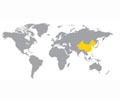

The impact of the US Federal Reserve’s policy shift on China’s foreign exchange market is manageable, cross-border capital flows are expected to continue in both directions, and the yuan’s exchange rate will remain basically stable at an appropriate and balanced level, an official from China’s central bank said on Wednesday.
Solid economic fundamentals, the increased flexibility of the yuan’s exchange rate and the optimization of the structure of capital inflows are basic guarantees for China to cope with external shocks, Pan Gongsheng, deputy governor of the People’s Bank of China (PBC) said on Wednesday during a financial forum.
“While major developed economies have achieved a rapid economic rebound, global inflation pressure continues to rise, and central banks of developed economies such as the US Fed have begun to release signals of a monetary policy shift,” Pan said.
The PBC and the State Administration of Foreign Exchange (SAFE) have accumulated experience in the macro-prudential management of cross-border capital flows, the official said.
According to the economic outlook released by US Fed Governor Christopher Waller on Tuesday, US GDP should rebound in the first half of 2022, although there was a significant slowdown in the third quarter of 2021.
Waller said that substantial progress has been made on both the inflation and employment legs of the dual mandate.
“In the last round of the Fed’s monetary policy tightening cycle, the US dollar appreciated significantly and emerging economies faced a big impact. But in this new round of the tightening cycle, both the economic growth and monetary policy gaps between the US and other economies are smaller than in the last round, which is expected to limit the appreciation space of the US dollar,” Pan said.
The central parity rate of the yuan against the US dollar stood at 6.4069 on Wednesday, according to SAFE.
As the yuan is gradually being internationalized and more frequently used in international settlements, its ability to resist external risks has increased, a financial analyst at Bank of China told the Global Times on Wednesday.
“Every country has realized the harm of US dollar hegemony and has made efforts to diversify investment and settlement using different currencies,” said the analyst, who requested anonymity.
In recent years, China’s capital inflow structure has been optimized and outbound investment has become more stable, according to Pan. Foreign debt inflows via foreign investors have come mainly in the form of yuan bonds, so they are relatively stable, he said.
In the first nine months of 2021, China absorbed foreign investment of 859.51 billion yuan ($134.67 billion), an increase of 19.6 percent on a yearly basis, according to the Ministry of Commerce.
Source: Global Times